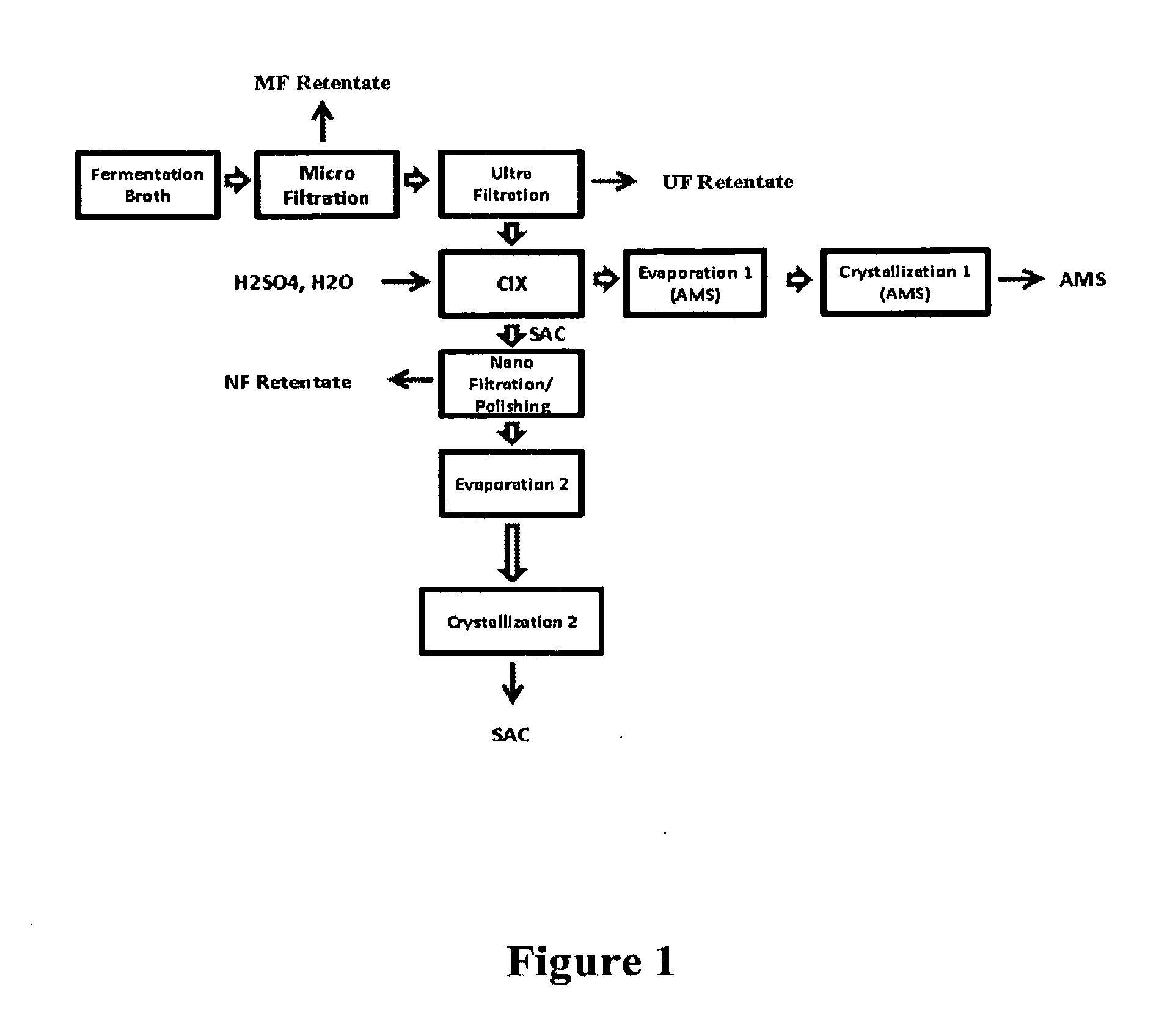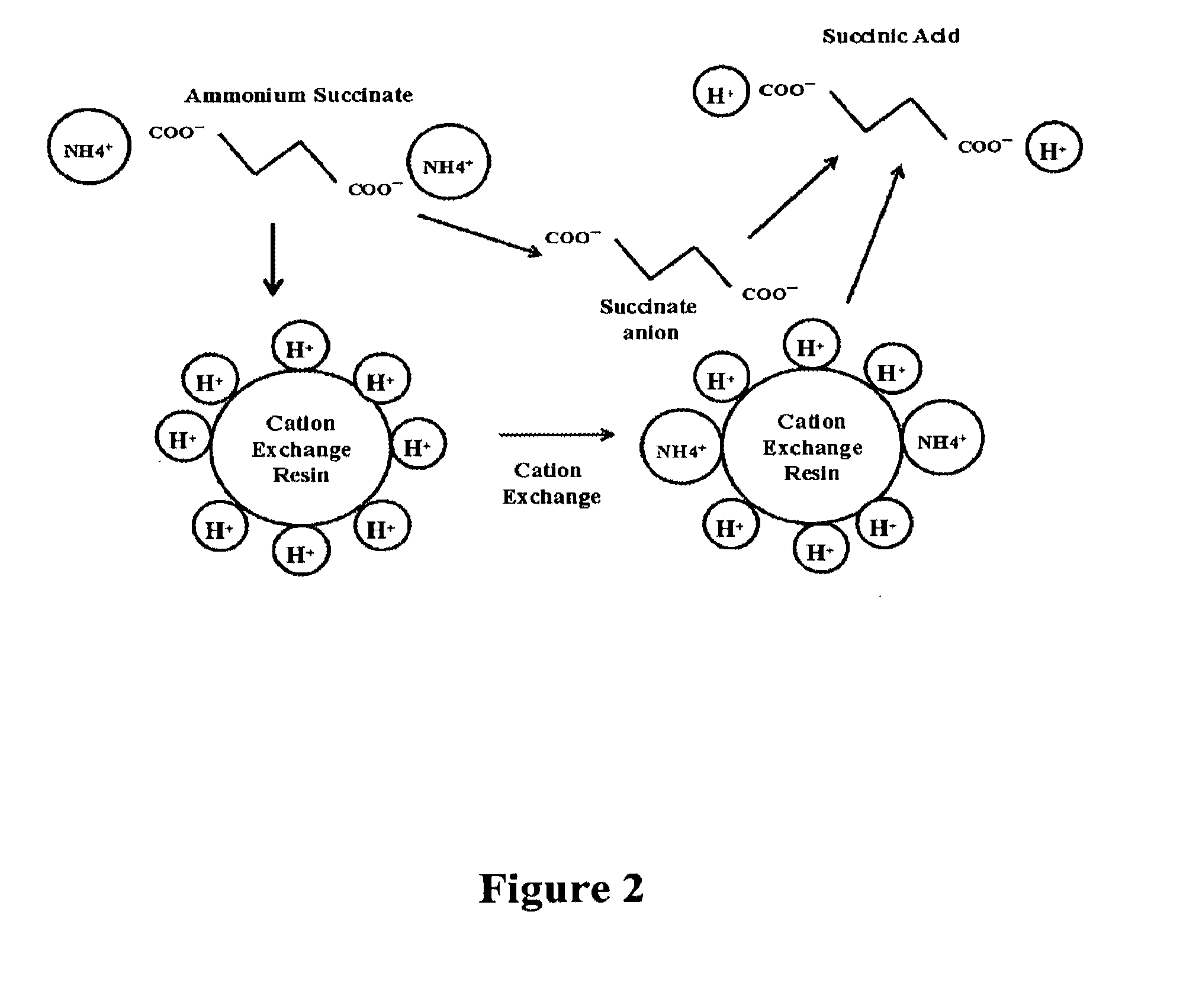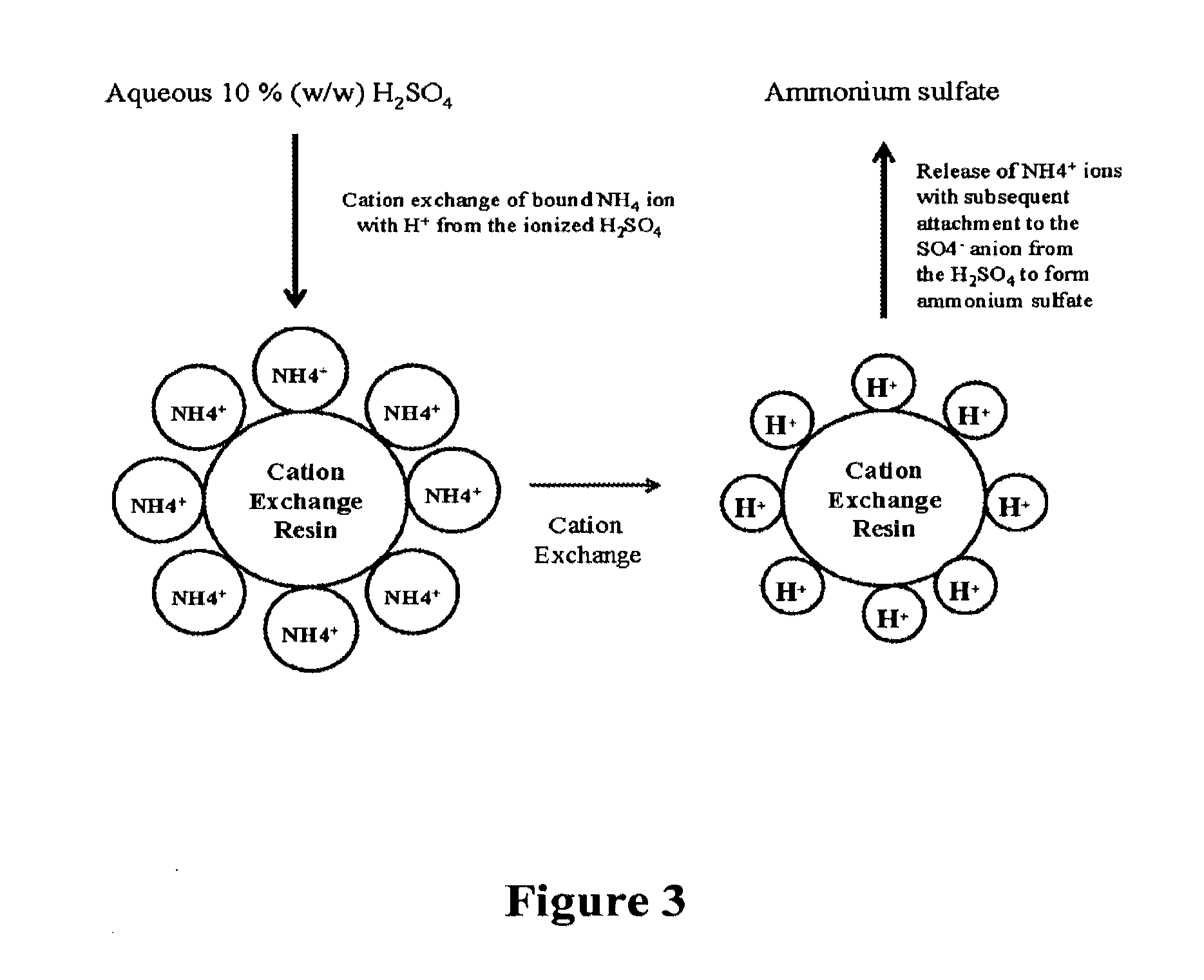Purification of succinic acid from the fermentation broth containing ammonium succinate
- Summary
- Abstract
- Description
- Claims
- Application Information
AI Technical Summary
Benefits of technology
Problems solved by technology
Method used
Image
Examples
example 1
Clarification of Fermentation Broth
[0097]A membrane suitable for microfiltration (MF) with a pore size of 0.1 ρM and another membrane suitable for ultrafiltration (UF) with a cut-off value of 150 kDa were tested for their efficiency in clarifying the fermentation broth comprising ammonium succinate. The characteristic features of these two different membranes are shown in Table 1 below.
[0098]The clarification pilot scheme with these two membranes is provided in FIG. 4. The permeate flow rate was measured as a function of the trans-membrane pressure (TMP) for each membrane. For this step, the feed broth flows through the membrane and the TMP was varied by opening the permeate circuit. Both retentate and permeate are re-circulated constantly to keep the volumetric concentration factor (VCF) at 1. The permeate obtained with both the membranes were clear although the flow rates were higher with the widest membrane (cut off: 0.1 μM). The membrane with pore diameter of 0.1 μM showed a flo...
example 2
Cationic Ion Exchange Chromatography
[0100]In this inventive process, a preparative chromatography column (1.6 cm dia.×100 cm length) containing a strong acid cation exchange resin such as Dowex G-26 H or Lanxess Lewit MonoPlus S 100H was utilized to split the ammonium succinate molecule and provide two (2) hydrogen ions (H+) for every succinate molecule. Lanxess resin 108H can also be used in place of Lanxess resin S 100H. This process yields succinic acid in solution which is then washed out of the column via a sequence of ‘slow’ and ‘fast’ pure water rinses.
[0101]As the ammonium succinate molecule is split via the strong acid cation exchange resin, the ammonium cation (NH4+) is bound to the cation exchange resin. After pure water rinses have been conducted to wash out the succinic acid, the resin bed is washed with sulfuric acid in appropriate concentrations to regenerate the cation resin beads. In this step, the hydrogen ion (H+) from the sulfuric acid is exchanged with the previ...
example 3
Pulse Test Results For Chromatography With Anion Exchange Resin
[0114]In order to select an anion exchange resin to be used in the continuous ion exchange chromatography pulse test was conducted with fermentation broth and three different anion exchange resins. The fermentation broth had the composition as shown in the Table 7.
[0115]The chemical characteristics of three different anion exchange resins tested in this invention are provided in Table 8. The sample elution sequential profile with each of these three anion exchange resin is provided in the Table 9. The columns (initially under sulfate form are overloaded with the raw broth with the volume provided in the Table 9 to estimate the maximum resin capacity. The column was rinsed with water followed by a regeneration step involving washing with 10% sulfuric acid and a rinse with water. The performance summary for each of three resins tested in the present invention is provided in Table 10. Resin XA 3121 showed poor efficiency re...
PUM
| Property | Measurement | Unit |
|---|---|---|
| Fraction | aaaaa | aaaaa |
| Mass | aaaaa | aaaaa |
| Temperature | aaaaa | aaaaa |
Abstract
Description
Claims
Application Information
 Login to View More
Login to View More - R&D Engineer
- R&D Manager
- IP Professional
- Industry Leading Data Capabilities
- Powerful AI technology
- Patent DNA Extraction
Browse by: Latest US Patents, China's latest patents, Technical Efficacy Thesaurus, Application Domain, Technology Topic, Popular Technical Reports.
© 2024 PatSnap. All rights reserved.Legal|Privacy policy|Modern Slavery Act Transparency Statement|Sitemap|About US| Contact US: help@patsnap.com










